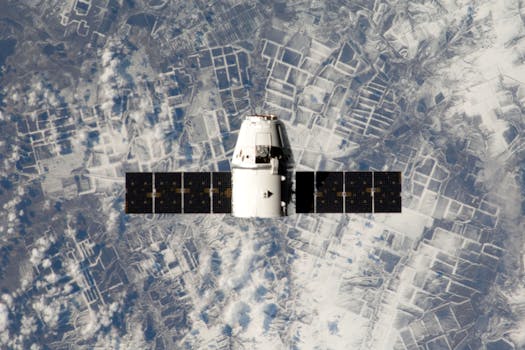
The Future of Satellites: Revolutionizing Global Communication and Exploration
The future of satellites is poised to revolutionize global communication and exploration, with advancements in space technology and satellite design enabling new applications and services. The focus keyword, future of satellites, is at the forefront of this revolution, driving innovation and investment in the industry. As we look to the future, it is clear that satellites will play an increasingly important role in shaping our world.
Satellites have been a crucial part of our global communication infrastructure for decades, providing connectivity and enabling the transmission of data, voice, and video signals around the world. However, the next generation of satellites is set to be even more powerful and versatile, with the ability to support a wide range of new applications and services. From 5G and 6G wireless networks to Internet of Things (IoT) devices and artificial intelligence (AI), satellites will be at the heart of many emerging technologies.
Advancements in Space Technology
One of the key drivers of the future of satellites is the rapid advancement of space technology. New materials, designs, and manufacturing techniques are enabling the development of smaller, lighter, and more powerful satellites that can be launched into orbit at a lower cost. This has opened up new opportunities for satellite operators and manufacturers, as well as for governments and other organizations looking to use satellites for a wide range of applications.
Another area of advancement is in the field of propulsion systems, with new technologies such as ion engines and hall effect thrusters enabling satellites to operate for longer periods of time and to maneuver more efficiently in orbit. This has significant implications for the future of satellites, as it will enable them to be used for a wider range of applications and to operate in more challenging environments.
New Applications and Services
The future of satellites will also be shaped by the emergence of new applications and services. One area that is expected to see significant growth is in the field of earth observation, where satellites will be used to monitor the environment, track climate change, and provide critical insights for industries such as agriculture and forestry. Another area that is expected to see growth is in the field of satellite-based navigation, where satellites will be used to provide positioning and timing signals for a wide range of applications, from aviation and maritime to automotive and consumer electronics.
In addition to these applications, satellites will also play a critical role in the development of smart cities and connected communities. By providing high-speed, low-latency connectivity, satellites will enable the creation of intelligent transportation systems, smart grids, and other critical infrastructure that will underpin the cities of the future.
Challenges and Opportunities
While the future of satellites is full of promise, there are also significant challenges that must be addressed. One of the key challenges is the issue of space debris, which poses a significant threat to the long-term sustainability of satellite operations. Another challenge is the issue of cybersecurity, which is critical to the protection of satellite systems and the data they transmit.
Despite these challenges, the future of satellites is exciting and full of opportunities. With the right investment, innovation, and regulation, satellites have the potential to revolutionize global communication and exploration, and to play a critical role in shaping the world of the future.
Conclusion
In conclusion, the future of satellites is a rapidly evolving field that is poised to revolutionize global communication and exploration. With advancements in space technology, new applications and services, and significant investment and innovation, satellites will play an increasingly important role in shaping our world. As we look to the future, it is clear that satellites will be at the heart of many emerging technologies, from 5G and 6G wireless networks to Internet of Things (IoT) devices and artificial intelligence (AI).






